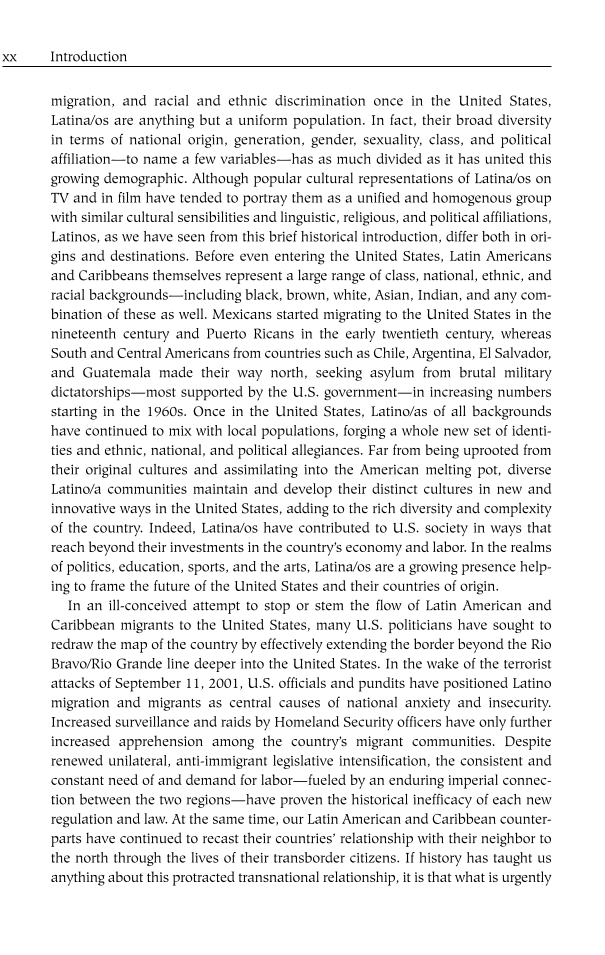migration, and racial and ethnic discrimination once in the United States, Latina/os are anything but a uniform population. In fact, their broad diversity in terms of national origin, generation, gender, sexuality, class, and political affiliation—to name a few variables—has as much divided as it has united this growing demographic. Although popular cultural representations of Latina/os on TV and in film have tended to portray them as a unified and homogenous group with similar cultural sensibilities and linguistic, religious, and political affiliations, Latinos, as we have seen from this brief historical introduction, differ both in ori- gins and destinations. Before even entering the United States, Latin Americans and Caribbeans themselves represent a large range of class, national, ethnic, and racial backgrounds—including black, brown, white, Asian, Indian, and any com- bination of these as well. Mexicans started migrating to the United States in the nineteenth century and Puerto Ricans in the early twentieth century, whereas South and Central Americans from countries such as Chile, Argentina, El Salvador, and Guatemala made their way north, seeking asylum from brutal military dictatorships—most supported by the U.S. government—in increasing numbers starting in the 1960s. Once in the United States, Latino/as of all backgrounds have continued to mix with local populations, forging a whole new set of identi- ties and ethnic, national, and political allegiances. Far from being uprooted from their original cultures and assimilating into the American melting pot, diverse Latino/a communities maintain and develop their distinct cultures in new and innovative ways in the United States, adding to the rich diversity and complexity of the country. Indeed, Latina/os have contributed to U.S. society in ways that reach beyond their investments in the country’s economy and labor. In the realms of politics, education, sports, and the arts, Latina/os are a growing presence help- ing to frame the future of the United States and their countries of origin. In an ill-conceived attempt to stop or stem the flow of Latin American and Caribbean migrants to the United States, many U.S. politicians have sought to redraw the map of the country by effectively extending the border beyond the Rio Bravo/Rio Grande line deeper into the United States. In the wake of the terrorist attacks of September 11, 2001, U.S. officials and pundits have positioned Latino migration and migrants as central causes of national anxiety and insecurity. Increased surveillance and raids by Homeland Security officers have only further increased apprehension among the country’s migrant communities. Despite renewed unilateral, anti-immigrant legislative intensification, the consistent and constant need of and demand for labor—fueled by an enduring imperial connec- tion between the two regions—have proven the historical inefficacy of each new regulation and law. At the same time, our Latin American and Caribbean counter- parts have continued to recast their countries’ relationship with their neighbor to the north through the lives of their transborder citizens. If history has taught us anything about this protracted transnational relationship, it is that what is urgently xx Introduction
Document Details My Account Print multiple pages
Print
You have printed 0 times in the last 24 hours.
Your print count will reset on at .
You may print 0 more time(s) before then.
You may print a maximum of 0 pages at a time.






























































































































































































































































































































































































































































































































































































































































































































































































































































































































































































































